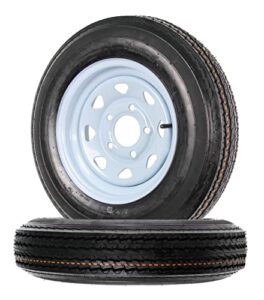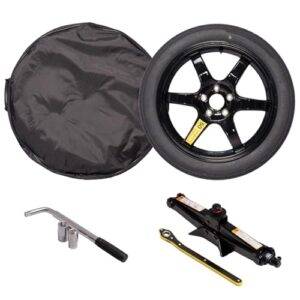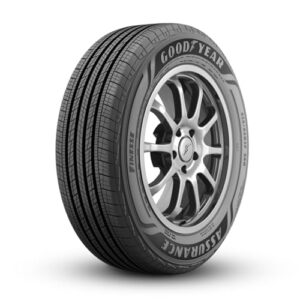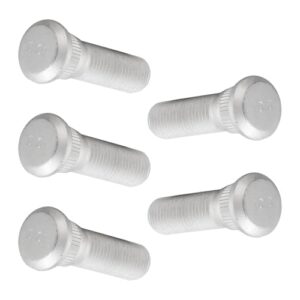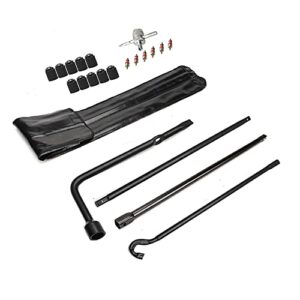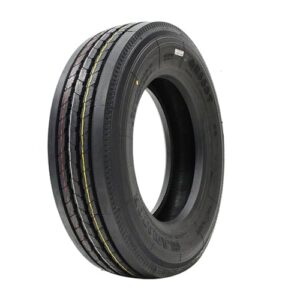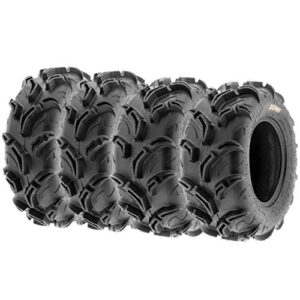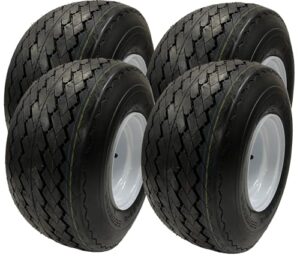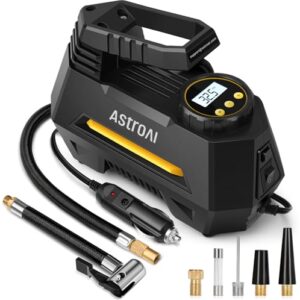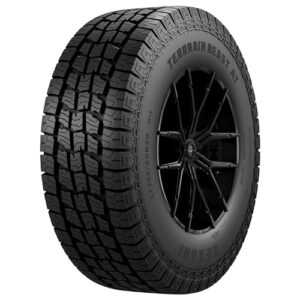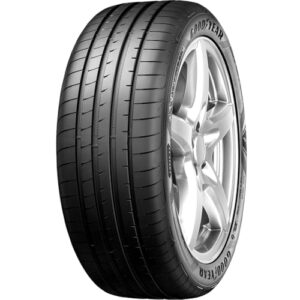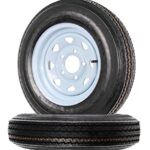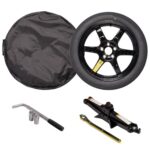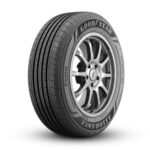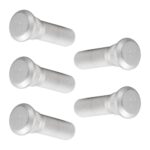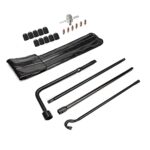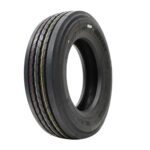To fix uneven tire wear, check tire pressure and ensure proper wheel alignment. Rotate tires regularly for even wear.
Uneven tire wear can lead to various issues, including poor handling and reduced tire lifespan. Regular maintenance is essential to avoid these problems. Start by checking your tire pressure monthly, as incorrect pressure can cause uneven wear. Wheel alignment is another critical factor; misalignment can result in tires wearing out faster on one side.
Regular tire rotation helps distribute wear more evenly, extending the life of your tires. Addressing these key areas ensures a smoother ride and better fuel efficiency. Proper care of your tires not only saves money but also improves safety on the road.
Common Causes
Uneven tire wear can shorten the lifespan of your tires. Understanding the common causes is crucial to fix the issue. Let’s explore the primary factors that lead to uneven tire wear.
Improper Alignment
Improper alignment is a leading cause of uneven tire wear. When your tires are not aligned properly, they do not meet the road surface evenly. This results in some parts of the tire wearing out faster than others.
Signs of improper alignment include:
- Car pulling to one side
- Steering wheel off-center
- Uneven tire tread
Regularly checking your wheel alignment can help prevent uneven wear. A professional can adjust the alignment to ensure the tires meet the road at the correct angle.
Uneven Tire Pressure
Uneven tire pressure is another common cause of uneven wear. Tires need the right amount of air to distribute the car’s weight evenly.
Low tire pressure results in the tire sides wearing out faster. On the other hand, high tire pressure causes the center of the tire to wear down quickly.
| Pressure Condition | Wear Pattern |
|---|---|
| Low Pressure | Side Wear |
| High Pressure | Center Wear |
Regularly check your tire pressure using a gauge. Ensure it matches the manufacturer’s recommended levels. This simple step can prevent uneven tire wear and extend tire life.
Identifying Symptoms
Recognizing uneven tire wear early can save money and ensure safety. It helps to know the symptoms to look for. Below are key indicators to watch out for.
Visual Inspection
A visual inspection can reveal much about your tires’ condition. Look for uneven tread wear. Check if one side of the tire is more worn than the other. Use a tread depth gauge to measure the depth of the grooves. Compare the depth across different spots on the tire.
- Feathering: Tread blocks appear smooth on one side and sharp on the other.
- Cupping: Scalloped, wavy patterns on the tire surface.
- Bald Spots: Areas where the tread is completely worn away.
Perform this inspection monthly for best results. Rotate the tires to get a better view of each one.
Steering Issues
Uneven tire wear can affect your car’s steering. Pay attention to how your car handles on the road. Notice if the steering wheel pulls to one side. This could mean the tires are unevenly worn.
Listen for unusual noises while driving. A humming or thumping sound could indicate tire problems. Check if your car vibrates at higher speeds. This often points to imbalanced tires.
Here is a quick checklist:
- Steering wheel pulls to one side.
- Car vibrates at high speeds.
- Unusual noises from the tires.
These signs help you catch tire issues early. Regularly check your tires to ensure a smooth and safe ride.
Tire Rotation
Tire rotation is essential to maintain even tire wear. It extends the life of your tires and improves vehicle safety. By rotating your tires, you ensure that they wear evenly over time. This simple maintenance task can save you money and improve your driving experience.
Rotation Patterns
Understanding rotation patterns is crucial for effective tire rotation. Different vehicles require different patterns. Here are the common ones:
- Front-Wheel Drive: Move front tires to the rear on the same side. Cross the rear tires to the front.
- Rear-Wheel Drive: Move rear tires to the front on the same side. Cross the front tires to the rear.
- All-Wheel Drive: Cross all tires diagonally.
Frequency
Tire rotation should be done at regular intervals. Most experts recommend every 5,000 to 8,000 miles. This frequency ensures that your tires wear evenly.
Check your vehicle’s manual for specific recommendations. Consistent rotation helps maintain balanced traction and handling.
Regular tire rotation also provides an opportunity to inspect your tires. Look for signs of damage or uneven wear. Early detection can prevent bigger issues.

Balancing Tires
Balancing tires is crucial for maintaining even tire wear. It ensures smooth driving and extends tire life. Let’s explore the importance of balancing tires and signs of unbalanced tires.
Importance Of Balancing
Balancing tires prevents vibrations and uneven tire wear. It improves vehicle handling and fuel efficiency.
Benefits of Balanced Tires:
- Reduced vibrations
- Longer tire life
- Better fuel efficiency
- Improved vehicle handling
Signs Of Unbalanced Tires
Unbalanced tires can cause several issues:
| Sign | Description |
|---|---|
| Vibrations | Steering wheel shakes at certain speeds. |
| Uneven Tire Wear | Tires wear out more on one side. |
| Noise | Humming or thumping sounds while driving. |
| Poor Handling | Vehicle feels unstable or pulls to one side. |
If you notice these signs, balance your tires immediately. Proper balancing ensures a smoother and safer ride.
Wheel Alignment
Uneven tire wear can lead to many problems. One major cause is improper wheel alignment. Proper alignment ensures your tires wear evenly, improving vehicle safety and lifespan.
Alignment Types
There are three main types of wheel alignment:
- Toe Alignment: Adjusts the angle of the tires pointing inward or outward.
- Camber Alignment: Adjusts the tilt of the tire inward or outward.
- Caster Alignment: Adjusts the angle of the steering pivot.
Each type of alignment affects tire wear differently. Ensuring the right alignment is crucial.
Professional Vs. Diy
Professional Alignment services use specialized tools. They ensure precise adjustments. This method is reliable but can be costly.
DIY Alignment requires a keen eye and basic tools. You can save money, but it’s less accurate.
| Method | Pros | Cons |
|---|---|---|
| Professional |
|
|
| DIY |
|
|
Both methods have their pros and cons. Choose based on your needs and skills.
Maintaining Tire Pressure
Maintaining proper tire pressure is crucial for even tire wear. Incorrect tire pressure can lead to uneven tire wear and poor vehicle performance. Regular checks and using pressure gauges can help keep your tires in good shape.
Regular Checks
Check your tire pressure regularly to ensure they are properly inflated. Make it a habit to check your tire pressure at least once a month. It’s essential to check tire pressure before long trips and during weather changes. Cold weather can cause tire pressure to drop, while hot weather can increase it.
Keeping your tires at the recommended pressure improves fuel efficiency. It also improves the vehicle’s handling. Uneven tire wear can occur if tires are under-inflated or over-inflated. Refer to your vehicle’s manual for the correct tire pressure.
Using Pressure Gauges
A pressure gauge is a handy tool for checking tire pressure. Digital pressure gauges provide accurate readings and are easy to use. Analog gauges are also reliable and readily available. Ensure the gauge is calibrated correctly for accurate results.
Follow these steps to use a pressure gauge:
- Remove the valve cap from the tire.
- Press the gauge onto the valve stem.
- Read the pressure on the gauge display.
- Compare the reading to the recommended pressure.
- Adjust the tire pressure if necessary.
- Replace the valve cap.
Using a pressure gauge helps maintain even tire wear. It ensures your tires are at the optimal pressure for your vehicle.
Table Of Recommended Tire Pressure
Refer to the table below for the recommended tire pressure for common vehicle types:
| Vehicle Type | Recommended Pressure (PSI) |
|---|---|
| Sedan | 32-35 |
| SUV | 35-40 |
| Truck | 40-45 |
| Motorcycle | 28-32 |
Always check your vehicle’s manual for the most accurate tire pressure. Keeping your tires at the correct pressure extends their lifespan and ensures a smoother ride.
Suspension Maintenance
Uneven tire wear often stems from poor suspension maintenance. Keeping your suspension system in top shape ensures even tire wear. Let’s dive into some key areas of suspension maintenance.
Shock Absorbers
Shock absorbers play a crucial role in vehicle stability. They absorb bumps and keep tires in contact with the road. Worn-out shocks can lead to uneven tire wear.
- Inspect shocks for leaks
- Check for dents or damage
- Replace shocks every 50,000 miles
| Symptom | Possible Cause |
|---|---|
| Vehicle bounces excessively | Worn-out shock absorbers |
| Uneven tire wear | Faulty shocks |
Suspension Components
Various suspension components contribute to even tire wear. These include springs, control arms, and ball joints.
- Inspect springs for sagging
- Check control arms for damage
- Ensure ball joints are not loose
Regularly check and maintain these components. This helps in preventing uneven tire wear.

Choosing Quality Tires
Fixing uneven tire wear starts with choosing quality tires. Good tires ensure better grip, improved safety, and long-lasting performance. In this section, we’ll cover the importance of tread patterns and durability when selecting tires.
Tread Patterns
Tread patterns play a crucial role in tire performance. They affect grip, handling, and wear. Different patterns suit different driving conditions:
- Symmetrical Treads: Offer a smooth ride and even wear.
- Asymmetrical Treads: Provide better grip and handling.
- Directional Treads: Best for wet conditions, reduce hydroplaning.
Choosing the right tread pattern helps prevent uneven wear. It ensures tires perform well in your driving conditions.
Durability
Durability is another key factor in tire selection. Durable tires last longer and resist wear better. Consider these aspects:
| Durability Factors | Benefits |
|---|---|
| Rubber Quality | High-quality rubber improves longevity. |
| Reinforcement Materials | Steel belts and polyester cords add strength. |
| Tread Compound | Special compounds improve wear resistance. |
Investing in durable tires saves money in the long run. It also minimizes the risk of uneven tire wear.

Frequently Asked Questions
Can You Correct Uneven Tire Wear?
Yes, you can correct uneven tire wear. Rotate your tires regularly and ensure proper alignment and balancing.
How Long Can You Drive With Uneven Tire Wear?
Driving with uneven tire wear can be dangerous. Replace or rotate tires as soon as possible to ensure safety.
How Do You Fix A Lopsided Tire?
Balance the tire using a professional tire balancer. Check for uneven wear or damage. Rotate and align the tires.
Why Is Only One Tire Worn Out?
Uneven tire wear can result from misalignment, improper inflation, or suspension issues. Regular maintenance helps prevent this problem.
Conclusion
Maintaining even tire wear is crucial for vehicle safety and longevity. Regularly rotate your tires and check alignment. Ensure proper inflation and balance. Address issues promptly to avoid costly repairs. Following these steps can increase your driving experience and extend tire life.
Keep your tires in top shape for a smoother ride.




